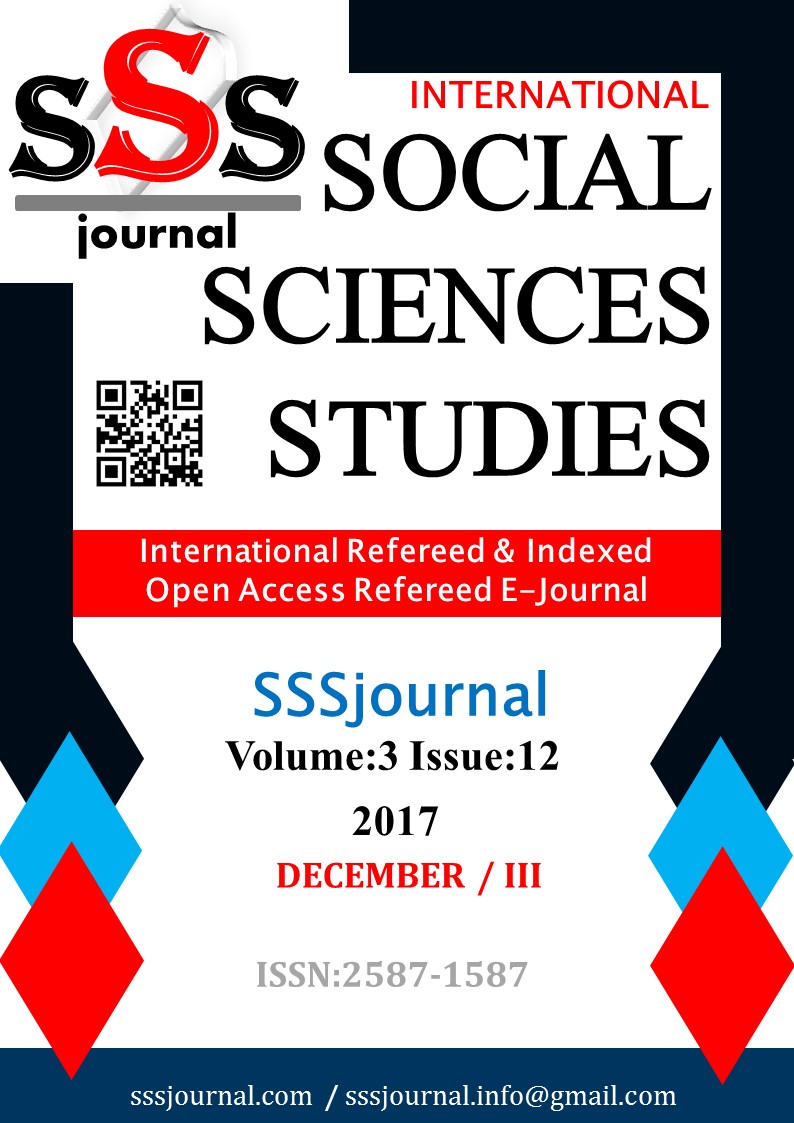Author :
Abstract
Bu çalışmanın amacı, Avrupa spor eğitimi temelinde yetişmiş profesyonel futbol oyuncularının Türkiye Futbol Federasyonu Spor Toto Süper Ligi’ne son beş yılda vermiş oldukları katkının incelenmesidir. Bu çalışma nitel ve karşılaştırmalı bir araştırmadır. Çalışmanın evrenini bu lige son beş yıldır katılan tüm spor kulüplerinin profesyonel futbol oyuncuları oluşturmaktadır. Nitel araştırma yöntemlerinden doküman analizi tekniği ile kurgulanan çalışmada kullanılan verilere Türkiye Futbol Federasyonu tarafından verilen izin ile elektronik ortamdan ulaşılmıştır. Toplam 3675 lisanslama işleminin yapıldığı son beş sezondan elde edilen verilere sıklık analizi uygulanarak anlamlı bulgular aranmıştır. Sonuç olarak Avrupa spor eğitimi temelinde yetişen futbol oyuncuları son beş sezonda Futbol Süper Ligi’ne diğer oyunculara oranla, olumlu eylemlerde (müsabaka sayısı, gol, vb.) daha fazla, olumsuz eylemlerde (sarı kart, kımızı kart, vb.) ise daha az katkı verdikleri tespit edilmiştir. Ayrıca nüfusa oranlanırsa eğer Avrupa spor eğitimi temelinde yetişmiş Türk oyuncular, Türkiye spor eğitimi temelinde yetişen oyunculara oranla çok daha fazla katkı vermektedir. Bu doğrultuda ülkemiz futbol eğitimlerini Avrupa spor eğitimi sistematiği ile karşılaştırmak bir zorunluluk haline gelmiştir.
Keywords
Abstract
The purpose of this study is examining of contributions of football players who trained in European Sport Education into the Turkish Super League (TSL) for last five seasons. This study is an qualitative and comparative research. Used data in study by author obtained from web site of Turkish Football Association. In the study, frequency, chi-square, independent samples t-test, pearson correlation and one way ANOVA analyses used and significant differences (p<,05) were be enquired. In the last five seasons, there are 538 (%14,64 of total) Turkish football players who trained in Europe and 629 (%17,12 of total) European football players in TSL. The results of this study is that European football players are more beneficial then others in the last five seasons in TSL.
Keywords
- Foer, F. (2004). How soccer explains the world: An unlikely theory of globalization (p. 115). New York:
- Talimciler, A. (2008). Futbol değil iş: endüstriyel futbol. İletişim Kuram ve Araştırma Dergisi, 26, 89-114.
- Bangsbo, J. (1993). The physiology of soccer--with special reference to intense intermittent exercise. Acta
- Bangsbo, J., Nørregaard, L., & Thorsoe, F. (1991). Activity profile of competition soccer. Canadian journal of
- Eniseler, N. (2010), Bilimin Işığında Futbol Antrenmanı, İstanbul: Birleşik Matbaacılık. s. 334.
- Reilly, T., Williams, A. M., Nevill, A., & Franks, A. (2000). A multidisciplinary approach to talent
- Williams, A. M. (2000). Perceptual skill in soccer: Implications for talent identification and development.
- Uğural, M. T. (2011). Başarılı futbol altyapı organizasyonu oluşturulması ve Galatasaray örneği (Doctoral
- Özkan, A., & Özkan, A. (2016). Futbolda Mükemmellik ve Yaşam Boyu Katılım (Uzun Süreli Futbolcu
- Harvey, W. (2013). Victory can be yours in the global war for talent: Social factors and lifestyle help to attract
- Seiler, S. (2010). Who Won the Olympics?. Sportscience, 14, 1-6.
- Bullock, N., Gulbin, J. P., Martin, D. T., Ross, A., Holland, T., & Marino, F. (2009). Talent identification and
- Guttmann, A. (2002). The Olympics, a history of the modern games. University of Illinois Press.
- Mangan, J. A., & Dyreson, M. (2013). Olympic legacies: intended and unintended: political, cultural, economic
- Parrish, R. (2003). Sports law and policy in the European Union. Manchester University Press.
- Aquilina, D., & Henry, I. (2010). Elite athletes and university education in Europe: a review of policy and
- Bailey, R. (2006). Physical education and sport in schools: A review of benefits and outcomes. Journal of
- European Commission/EACEA/Eurydice, 2013. Physical Education and Sport at School in Europe Eurydice
- Giulianotti, R. (2012). Football. John Wiley & Sons, Ltd.
- Preuss, H., & Schütte, N. (2016). Structures of an economic impact: The case of the FIFA Football World Cup
- 2014 in Brazil. In 7th INTERNATIONAL SPORT BUSINESS SYMPOSIUM (p. 40).
- Brown, M. (2015). The FIFA World Cup 1930–2010: Politics, Commerce, Spectacle and Identities. Sport in
- Senyuva, Ö., & Tunç, S. (2015). Turkey and the Europe of football. Sport in History, 35(4), 567-579.
- Bennett BL, Howell ML ve Simri U (1983). Comparative physical education and sport (2nded.). Lea &Febiger,
- Anthony DWJ (1966). Comparative Physical Education. İçinde: Physical Education. November.
- Borish, L. J., Wiggins, D. K., & Gems, G. R. (Eds.). (2016). The Routledge History of American Sport.
- Szymanski, S. (2015). Economics and (Modern) Sports History. The International Journal of the History of
- Basak, S., & Dutta, S. (2016). A Comparatıve Study Of Physıcal Fıtness Parameters Between General College
- Georgakis, S., & Graham, J. (2016). From Comparative Education to Comparative Pedagogy: A Physical
- Pühse, U., & Gerber, M. (2005). International comparison of physical education: Concepts, problems,
- Bilge, N. (1989). Türkiye'de beden eğitimi öğretmeninin yetiştirilmesi (Vol. 37). Kültür Bakanlığı.
- Ergün, M. (1996). İkinci Meşrûtiyet devrinde eğitim hareketleri:(1908-1914). Ocak Yayınları.
- Akyüz, Y. (2008). Türk eğitim tarihi. Ankara: Pegem Akademi Yayınları.





